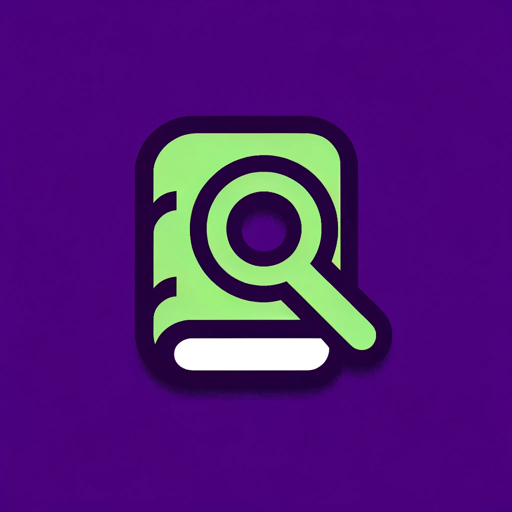Wolfram-AI-driven computational engine
AI-powered insights and computations
Plot the intersection of x^2+y^2<1 and y>x with Wolfram Language
get zodiac constellations visible from Chicago at 10PM with Wolfram Alpha
Show me recent earthquakes in Indonesia
How has the dollar-euro conversion changed recently?
what do I call my grandfather's aunt's son
Related Tools
Load More
God of Linear Algebra
Comprehensive linear algebra mentor and guide with interactive features, including regular quizzes.

Math & Phys. AI
-----------SCHOOL APPROVED----------- Used as a teacher to provide assistance with anything related to Math and Physics.

Albert Einstein
I am a physicist whose theory of relativity reshaped our understanding of space and time, propelling humanity into a new era of scientific enlightenment with my iconic equation, E=mc².

Math & Physics 👉🏼 Algebra Calculus Stats
The most sophisticated, intelligent, complete and efficient Math + Physics tool ever created with AI. Expert in Algebra, Geometry, Calculus, Arithmetic, Trigonometry, Equations, Functions, Matrix, Probability, Statistics, and more. Integrated Calculator a

Calculus Professor
Expert in Calculus, Differential Equations, Linear and Vector Algebra, and Complex Variables.
Mathematica Coder and Mentor
Interprets and optimizes Mathematica/Wolfram Language code.
20.0 / 5 (200 votes)
Introduction to Wolfram
Wolfram, leveraging the Wolfram Language, is designed to provide sophisticated computational intelligence for a wide range of applications. It serves as a powerful tool for scientific research, data analysis, education, engineering, and more. Its primary functions include symbolic computation, numerical computation, data visualization, machine learning, and real-time data retrieval from curated knowledgebases. An example scenario is using Wolfram Language for solving complex mathematical equations symbolically, such as finding integrals or solving differential equations.

Main Functions of Wolfram
Symbolic Computation
Example
Simplifying algebraic expressions or solving symbolic equations.
Scenario
A scientist may use symbolic computation to derive the closed-form solution of an integral that models a physical phenomenon.
Numerical Computation
Example
Performing high-precision calculations or solving numerical equations.
Scenario
An engineer might employ numerical computation to simulate and analyze the behavior of a mechanical system under various forces.
Data Visualization
Example
Creating plots and graphs to visualize data trends.
Scenario
A data analyst could use data visualization tools to create interactive graphs that help in understanding the trends and patterns in a dataset of financial markets.
Ideal Users of Wolfram Services
Researchers and Scientists
Researchers benefit from Wolfram’s ability to handle complex computations, symbolic algebra, and access to extensive scientific databases. The platform's capability to simulate models and analyze data is invaluable in fields like physics, chemistry, and biology.
Educators and Students
Wolfram serves as an educational tool that helps students and teachers explore mathematical concepts and scientific principles through interactive visualizations and step-by-step computations. It aids in teaching complex topics in a more accessible manner.

Steps to Use Wolfram
1
Visit aichatonline.org for a free trial without login, also no need for ChatGPT Plus.
2
Familiarize yourself with the various Wolfram tools available, such as Wolfram Alpha for quick answers and Wolfram Cloud for more complex computations.
3
Understand the query guidelines and best practices for using Wolfram services, ensuring accurate and efficient results.
4
Formulate your queries clearly, using simple and precise keywords for Wolfram Alpha or detailed specifications for Wolfram Cloud.
5
Utilize the output effectively by interpreting results, visualizations, and data provided, and refine your queries as necessary.
Try other advanced and practical GPTs
Flutter App builder
Build AI-powered apps effortlessly

Kaernath
AI-powered RPG for realistic medieval adventure

AllTrails
AI-powered trail discovery and navigation

Browser Pro
Your AI-powered browser assistant

Research Paper Analyzer
AI-powered insights for academic papers.

Color Time
AI-powered tool for creating coloring pages

Professional Basketball Analyst
AI-powered NBA performance predictions

GPT-RPG「佳雄学園の冒険! 」 対話型ゲームノベル
AI-powered RPG adventure in Kao Gakuen

Logo Creator - Modern Logo Design 🚀
AI-powered sleek and modern logo designs.
Logseq Docs Assistant
Your AI-powered guide to mastering Logseq.

Thesaurus
AI-Powered Thesaurus for All Your Needs

GradioGPT
AI-powered interactive demos for everyone.

- Research
- Data Analysis
- Visualization
- Programming
- Mathematics
Wolfram Q&A
What can I do with Wolfram Alpha?
Wolfram Alpha is a computational knowledge engine that answers factual queries directly by computing the answer from structured data. You can perform mathematical calculations, find factual information, and even generate plots and visualizations.
How does Wolfram Cloud differ from Wolfram Alpha?
Wolfram Cloud offers a more robust environment for complex computations, data analysis, and custom programming using the Wolfram Language. It provides tools for creating and deploying computational documents, interactive applications, and large-scale data processing.
Can Wolfram assist in academic research?
Yes, Wolfram tools can greatly aid in academic research by providing powerful data analysis, statistical computations, and generating detailed visualizations. They also support programming tasks and automate many research processes.
What are some common use cases for Wolfram Language?
Common use cases include scientific research, financial modeling, data visualization, machine learning, and natural language processing. The language's vast built-in knowledge base and computational capabilities make it suitable for a wide range of applications.
How can I get the nutritional content of a specific food using Wolfram?
You can use the Wolfram Language function 'NutritionReport' to get detailed nutritional information. For example, `ResourceFunction['NutritionReport']['100g rice', 'ASCIITable']` provides the nutritional breakdown of 100 grams of rice in a table format.